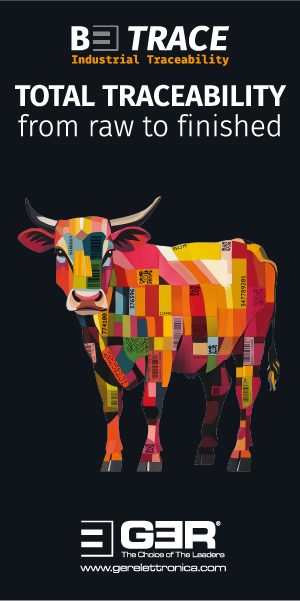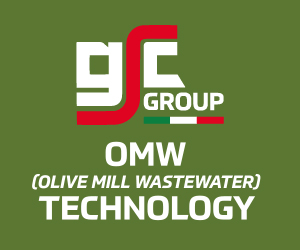Market Intelligence—27.02.24
Macroeconomics
Wars continue. We are for any solution that would make peaceful coexistence possible, but the chances of successful negotiations for peace are becoming more remote at the moment.
In economics, China remains stuck in a deflationary spiral and is struggling with falling consumer prices, in contrast to much of the rest of the world. The growth rate stands at about 5%, but the mood among Chinese consumers remains subdued.
There was little real news on the financial markets. The hype surrounding artificial intelligence continues and is particularly driving the share prices of companies that appear to offer the greatest potential in this sector. The discussion about inflation and the possible resulting decisions by national banks are also dominating investor decisions. The markets are fuelled by the general conviction that interest rates could be lowered in the summer of this year at the latest. As much as national budgets in many countries are eagerly awaiting interest rate cuts, it may still be premature to regard these cuts as a certainty in the coming months. There are many uncertainties and influences that may still thwart politicians’ wishes.
On the commodity markets, there is increasing discussion of a possible rise in prices due to growing demand, while supply tends to stagnate. At the moment, the end of the fossil fuel era still seems further away than many expect or hope. If there is any truth in the forecasts for energy and metal commodities, this would again pose a risk for price trends and therefore also for inflation data. This does not even take into account the general uncertainties arising from the military conflicts.
In recent weeks, oil prices have risen only slightly to just over $80 per barrel.
The price of gold has moved very little, but has managed to defend its level of above $2,000 per ounce.
There was also little movement in the US dollar, which weakened somewhat against the euro towards the end of the last two weeks and traded slightly above the $1.08 mark again.
Leather Pipeline
Many people in the leather industry were eagerly awaiting the Lineapelle exhibition in Milan (February 20-22) and a relatively large number made the journey to Italy to attend.
Normally, it is the second day that attracts the most visitors and seems to be the busiest. This year, however, most exhibitors told us that the best time for them was the morning of the first day. As always, the decisive factor is not how many people come, but who comes, with what intentions and what results the exhibitors derive from the visits.
The situation in the leather industry is currently divided into different sectors. And there are big differences between the industry in Europe and the industry in Asia. An additional sub-division must also be made in Europe. This was in evidence at Lineapelle.
Lineapelle is about showing what the leather industry has to offer the world of fashion in the broadest sense. Mass producers, the industrial leather manufacturers, do not play a decisive role at the fair. Many of them were not present as exhibitors. This applies in particular to the manufacturers of automotive leather, who only appear as names where they are part of groups of companies that do not only deal with automotive leather and whose motive for being present at the trade fair is not the manufacture of this product.
The same applies to many of the large producers of furniture leather, who also do not necessarily expect to see their customers in Milan. This reduces the main group of visitors to shoe and leathergoods manufacturers and designers, or other people with a connection to those segments.
Specialised leather manufacturers with special products and a high level of creativity showed once again the interesting and beautiful articles they bring to Milan every six months. This time, there were certainly fewer new products, but these exhibitors still demonstrate the beauty and the superior usage properties of the material. All the conversations we had with exhibitors in these sectors left the impression that, apart from individual problems, these producers continue to report satisfactory and sometimes even very good business results. Of course, it is also true that these companies are not perceived and reported on in the same way as many of the biggest players in the leather industry.
Visitors, especially the European raw materials suppliers, came to Milan to discuss the current situation with colleagues at home and abroad, hoping to take home some positive insights and information and, preferably, large contracts and successful sales.
There is particular interest in the automotive sector with its large companies, which here in Europe are particularly responsible for the ups and downs in demand and prices for heavy, male hides. Although the developments and trends and the problems in this sector have been talked about for months, the conviction of many that after decades of unbroken demand there may have been a trend reversal has somehow not yet become widespread.
Every piece of news about declining production was still seen by many as a temporary problem. However, when you meet a lot of people who have to deal with this sector in a compact format over the course of three days, it quickly becomes clear that there is much more at stake here. If, at the end of the trade fair, you simply add up the extent of the production cuts and reductions that began last year and how many such measures will be added in the coming weeks and months, it becomes clear how much the entire environment for this privileged raw material and its production has changed.
Since the beginning of 2024, production levels have, at best, been at 50% or 60% of previous levels. This reduction has not suddenly occurred in the last few weeks. The trend started a long time ago but was ignored for a long time too. Many raw material flows were diverted. Some of the demand that used to come directly from the leather factories for the raw materials was diverted into purchases of assortments from intermediate producers. Some suppliers were prepared to store goods that could not be sold immediately in the hope of better times ahead, but still the thought of shrinking demand for production in Europe has not been accepted as real by many suppliers.
The news of the last few weeks and the considerable cuts in manufacturers’ requirements forced a number of upholstery leather producers to significantly reduce their capacities. As this raw material is very much focused on being delivered fresh and chilled to the tanneries, there is no buffer, apart from the option for suppliers to make the goods storable for longer in a semi-finished state. However, this process has been the solution for many people for some time now, which is why there are also large offers from this processing stage on the market.
As these hides represent a very high price level owing to their special quality and limited use, they cannot really be marketed internationally at current prices. The premium that has been paid for this product for decades has become increasingly hard to justify in recent years. In a completely unemotional consideration and analysis of the prices, more and more people came to the realisation that a significant part of the price was down to the image rather than the true value.
Another important factor in the calculation was the declining prices for lime splits, which led to a fall in demand on the one hand and the value of all product ranges on the other.
The main influencing factor here is the automotive industry, which has become increasingly price- and cost-conscious and no longer wants to pay premiums for an exclusive raw material. The simultaneous rise in production costs and the general problems associated with shrinking volumes of demand from the European automotive industry are doing the rest.
Ultimately, this means that this very special raw material must now find a new, justifiable price level. The speciality and uniqueness of the material is history, at least for the time being.
If we are right with this thesis, it would mean a number of consequences and adjustments. We will go more deeply into this topic if our assumptions are confirmed in the coming weeks and months.
In any case, the first thing we can say is that many people are currently having to get used to these new conditions. In addition, there is still the open question around the stocks of semi-finished products from these hide types that are still in the warehouses of customers. If our price hypothesis is correct, many suppliers will have to make far-reaching decisions in the coming months.
It is difficult for us to provide any news from the split market at the moment. The fact is that if the decline in production in Europe materialises over the next few months, the supply of splits in Europe will definitely fall significantly. This would undoubtedly not be a major problem for the market for processed products, but it would be for the users of lime splits and their production capacities. If the decline in leather production continues on this scale for a few more months, there will certainly not be enough raw material available to utilise capacity, regardless of any price discussions. It remains to be seen what consequences this will have, but in principle we also have a supply-capacity problem here in the medium and long term.
In the case of sheepskins, we are perhaps already a step further on. Many lambskins and sheepskins can no longer be marketed in a cost-covering manner. The amount of raw material used in the leather industry is decreasing month by month. At the same time, however, many leather factories in Asia are now considering the consequences of this. After being able to buy any quantity at almost any price in recent years, availability is now declining significantly and they have to deal with the idea that the supply of raw material can only be secured at certain minimum prices over the next few years. Just because it was possible to buy significantly cheaper in the past does not mean that this will also be possible in the future. At the same time, we have to deal with these new parameters of price and volume correlation. We have the impression that at least the big players in China are very much thinking about this. Manufacturers in the Middle East have clearly not really realised this yet.
Over the next few weeks, we probably expect a phase of analysis rather than action. While the leather business in Asia is very stable on the basis of low-priced raw materials, the changed circumstances in Europe will sooner or later bring consequences. As everything is always interconnected in some way, changes in one part of the world will also have an impact on the situation elsewhere. The issue is extremely complex. As we have seen in recent months, psychology and strategic business decisions also play an important role. However, we believe that the pressure to make decisions is now increasing at an accelerated rate.












